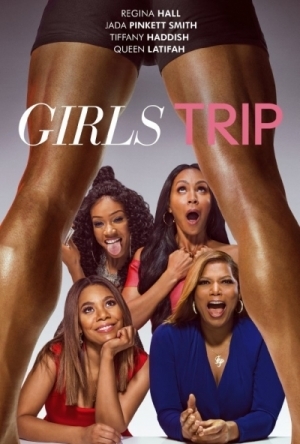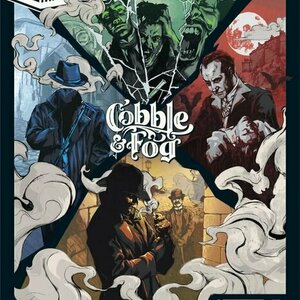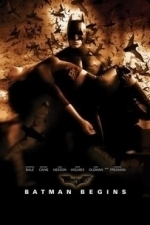
Girls Trip (2017)
Movie Watch
When four lifelong friends- Regina Hall, Queen Latifah, Jada Pinkett Smith and Tiffany Haddish-...
Contemporary British Literary Biography: Haunting Conversations: 2017
Book
This book is about one person's reading and what has been learnt about how the lives of other...

Supercharged Food Eat Clean, Green and Vegetarian
Book
This book will inspire you to create meals that are thoroughly delicious and loaded with...
Cyn Armistead (14 KP) rated More Holmes for the Holidays in Books
Mar 1, 2018
"The Christmas Gift" by Anne Perry is a nice little piece about a stolen Stradivarius and a couple who want to marry against the wishes of the young lady's father. There is an excellent red herring, one of the few in this anthology.
In "The Four Wise Men" by Peter Lovesey, Watson must answer a call to duty from his former commanding officer in the Army, in order to help guard a medieval treasure in a Christmas pageant. The game is soon afoot, and Sherlock's powers of observation are as keen as ever.
Barbara Paul's "Eleemosynary, My Dear Watson" gives Holmes a jewel theft and a kidnapping to solve, which he does in his inimitable way. One clue seemed slightly too obvious to me, but it may not to other readers.
In "The Adventure of the Greatest Gift" by Loren D. Estleman, Holmes receives a wax cylinder containing a recording of a song popular in America. He takes it as a warning of a crime which could lead to war between Britain and France, and of course he leaps into action. This is Mycroft Holmes' only appearance in the volume.
There's plenty of misdirection in "The Case of the Rajah's Emerald" by Carolyn Wheat. Somehow, though, I suspected one of the great revelations in this one from the beginning, but I couldn't tell you exactly why. It didn't ruin the story for me, and there was still a surprise at the end.
On the other hand, Edward D. Hoch's "The Christmas Conspiracy" managed to take me completely unawares. I couldn't fathom why the crime would be committed or by whom, despite having a major clue dropped by one character. Very well done!
"The Music of Christmas" by L.B. Greenwood telegraphed the identity of the criminal from the start, but was well worth reading. One of the characters also tugged at the heartstrings.
Bill Crider's "The Adventure of the Christmas Bear" is largely memorable because of the appearance of Oscar Wilde as a character.
"The Adventure of the Naturalist's Stock Pin" by Jon L. Breen gives us Charles Darwin as Holmes' client. The mystery is less Sherlockian than some of the others, but I didn't mind reading it.
Daniel Stashower's "The Adventure of the Second Violet" was an interesting twist on a well-known Christmas story. I cannot say more without spoiling it, but he has a nice touch.
"The Human Mystery" by Tanith Lee is as dark as I expect from her, and was a depressing ending to the collection. It was, however, very well-written.
The anthology left me hungry for more Holmes, and wishing that I weren't between seasons of BBC's Sherlock or that I had another collection of stories on hand. That's the sign of a success, I think.

Supercharged Food for Kids: Building Stronger, Healthier, Brighter Kids from the Ground Up
Book
Health guru Lee Holmes new book aims to establish positive eating habits for your kids with...

Supercharged Food: Eat Right for Your Shape: Deliciously Healthy Ayurvedic Recipes for a Brand-New You
Book
It is a well accepted fact that our bodies come in all different shapes and sizes and they all react...
Sophia (Bookwyrming Thoughts) (530 KP) rated Gates of Thread and Stone (Gates of Thread and Stone #1) in Books
Jan 23, 2020
Much as I actually read the synopsis once when I first saw it months ago on Goodreads and then again before I clicked "Read Now" on Netgalley, I ended up forgetting the synopsis <i>entirely</i> by the time I started.
Except for one word: Labyrinth. Needless to say, I actually thought for awhile that <i>Gates of Thread and Stone</i> would be about a labyrinth. <i>The</i> Labyrinth of the Greek myths, per say, and when I actually read <i>Gates of Thread of Stone</i>, I checked the synopsis again to set myself on the right track (because when there's no one being sent as sacrifice, you know there's something wrong).
<i>Gates of Thread and Stone</i> is really about a girl named Kai <i>living</i> with her "brother," Reev, in a place called the Labyrinth, named so by its maze-like structure, and where the lowest of the lowest in Ninurta live out their daily lives. But one day, Reev disappears just like many others and Kai is determined to find her brother.
There's something about <i>Gates of Thread and Stone</i> that I really like. It's definitely not the world, even though I highly enjoyed Lee's world-building each section (East Quarter, White Court, Void, Outlands, etc.) in Ninurta were set apart from one another and most even had their own nicknames (East Quarter = Labyrinth, North Quarter = Purgatory). It's most certainly not the amount of possible f-bombs in here as well, or what I'll assume as f-bombs, because "drek" by itself is certainly not sounding like crap or hell.
The characters were tolerable Kai is a determined and persistent character who has an admirable strength and may sometimes be a little feisty. Irra is perhaps one of my favorite characters by far, being a dramatic yet eccentric advisor in assisting Kai and Avan finding Reev. In fact... he's a bit of an oddity compared to the other Infinites, who seem to be similar to gods and goddesses based on their description.
The plot was a little predictable and I was just waiting for a couple of parts to play out (I really should stop being Sherlock Holmes and just enjoy reading the book, but I can't help myself). While the end is similar to the end of <i>Senshi</i> and the beginning of <i>Shinobi</i> and doesn't seem to have a bigger plot that spans over to the sequel or more books.
Now that I actually took the time to write all that down, maybe it's the world-building that I liked the most. With the ending of <i>Gates of Thread and Stone</i> seeming to be a solid ending, I may read the sequel just to for the pure fun of seeing what Ninurta will be like.
<a href="https://bookwyrmingthoughts.com/review-gates-of-thread-and-stone-by-lori-m-lee/"; target="_blank">This review was originally posted on Bookwyrming Thoughts</a>
Purple Phoenix Games (2266 KP) rated Unmatched: Cobble & Fog in Tabletop Games
Mar 19, 2021
In Unmatched: Cobble & Fog (which I will be calling Unmatched from here) players will be taking on the roles of either Dracula and his Sisters, Sherlock Holmes and Dr. Watson, Invisible Man, or Dr. Jekyll and Mr. Hyde in a battle to the death to claim victory in this, “Who would win in a fight”-style skirmish fighting game. The last hero standing wins, so as one of my favorite characters in literary history says, “The game is afoot.”
DISCLAIMER: Even though this review is for the Cobble & Fog version of Unmatched, the rules are the same throughout the entire Unmatched family of games. I have the original Unmatched: Battle of Legends, Vol. 1 and it plays exactly the same. I prefer the characters in this version, so that’s why I am reviewing it specifically. -T
To setup, the players will choose which side of the board they wish to play and set it on the table. Next, players will choose their hero and gather all accoutrements associated with their choice. All heroes come with a deck of 30 action cards, a mini of their figure, a character card, at least one health dial (more if their sidekicks have more than one health point), and some characters will have sidekicks that have tokens, or tokens for other reasons. The youngest player places their mini on the space with the number 1 on the board, and then the rest of the players place theirs on subsequently-numbered spaces. Players shuffle their decks of action cards and draw five cards for their first hand.
On a turn a player may take two actions from the choice of: Maneuver, Scheme, Attack. When a player chooses to Maneuver they will draw a card into their hand, then move the amount of spaces noted on their character card (typically two spaces). These movement values may be boosted by also discarding additional cards for their boost value and adding it to the number of spaces moved.
All action cards will specify which character may use it for attack, defense, or Scheme action. These Scheme cards have a lightning bolt icon on them to indicate that they are played face-up to the table, resolved, and then discarded.
Finally, if a melee-based character is positioned adjacent to an opponent, or if a ranged character is in the same zone as an opponent, they may Attack said opponent. To Attack, the active player declares which opponent will be attacked, and each player involved will choose cards from their hands to use in the battle. The attacking player will need to use attack or versatile (either used for attack or defense) cards to try to inflict damage, while the defending player will need to play defense or versatile cards in defense. The difference of the values printed on the cards will determine which character wins the battle and if health points are to be deducted from the health dial.
Many cards will have action instructions that trigger either immediately during battle or even after the battle concludes. Resolve these actions when appropriate and try to stay on your feet.
Play continues in this fashion of moving around the board to gain cards or using the cards to scheme or attack/defend. The winning player is they who survives at the end and vanquishes all foes on the board.
Components. I love everything about the components in this game. The box is great. The insert is really incredible and well thought out. The cards are great quality and the game features spectacular art all around. The minis are cool and luckily are fitted inside colored bases to remind players which mini is theirs. The sidekick tokens are excellent thick plastic and color-matched to the bases of their hero counterparts. The board is nice and double-sided, and all the rest of the cardboard components are excellent.
It’s no secret here – I absolutely love this game. I have always been a big fan of Sherlock Holmes, and this set also includes other interesting characters to play. Each one is highly unique in style and that’s one of the reasons I am so intrigued by this system. I say system because this is not the only game in the Unmatched family. As of today the Unmatched system boasts all of these as playable characters from different sets: King Arthur, Alice, Medusa, and Sinbad from the “Battle of Legends, Vol 1” set; Robert Muldoon and raptors from the “Jurassic Park, InGen vs Raptors” set; the “Robin Hood vs Bigfoot” set; Bruce Lee; and Buffy, Spike, Willow, and Angel from the “Buffy the Vampire Slayer” set in addition to these here. I know more Jurassic Park sets are on the horizon, and I just cannot wait to see what other sets will be released in time.
Why do I love this game so much when I am not really a fan of moving and dueling games (I’m looking at you Mage Wars)? In these style of games I feel the movement is unnecessary as I just stand and fight. In this system, the only way to draw more cards from your deck is to enact the Maneuver action. There have been several times where I didn’t necessarily want to initiate a battle, but I saw opponents sitting with no cards in their hand. That means no defense cards can be played. Easy chunks of health taken by picking off the stationary few. Unmatched forces players to move around and I love that. Yes, there are opportunities to unleash giant blows or have double-digit health drops in battle, and that’s just delicious. Also there are times during play where mathing out exactly where to place your mini or sidekick is paramount to lay plans of ambush.
I mentioned earlier that I knew right away I would love this one. Opening the cover of the rulebook sold me immediately. As this set utilizes literary characters found in old timey Europe the game utilizes a period art style as well and I’m still fawning over it. Everything clicks for me and I can now understand why so many people were dying (not literally) to get copies of the game Unmatched is based on, Star Wars: Epic Duels. It is extremely fun and each character is interesting and unique. Purple Phoenix Games gives this one a well-earned GOLDEN FEATHER AWARD! If you need a skirmish style game with excellent theme and art, you must grab this post haste. If you and I fall on the same side of the coin with our gaming preferences you NEED to have this in your collection.
I don’t know how many other sets I will be looking to add to my collection at this point, but I cannot tell you how excited I would be to pit Bigfoot against Bruce Lee. Or King Arthur against Dracula. It just feels epic and wonderful. Great job to the team at Restoration Games. This is a huge win for my collection.
RəX Regent (349 KP) rated Batman Begins (2005) in Movies
Feb 19, 2019
Back in 2005, the hype for this film was building, with a new take on the old comic hero taking shape. Though I must admit that the design of the new Batmobile didn’t look cool to me, but I loved the concept of rooting him in a real world. The other questionable point was that lack of the big hitters in terms of the villains. The Joker, Penguin, Riddler and Catwomen were dumped in favour of The Scarecrow and Ra’s al Ghul, with only one that I, as the un-indoctrinated in comic book lore, that I had heard of being The Scarecrow.
But this was not to be a typical Batman film in any sense of the word. In June 2005, Batman was reborn and not only had the career of an independently styled filmmaker, Christopher Nolan blown into the big leagues but Blockbusters had just been redefined, an event not dis-similar in effect t those of Jaws and Star Wars in the 1970’s.
Batman, a Warner Bros. cash cow for decades, was about to cross all the main lines within the industry and a blockbuster with art house sensibilities and real intelligence was about to born. It’s not the first, but it opened the door for Nolan and his like to change the way we think about movies of this kind. It doesn’t seem to be that long ago that Marvel was dominating cinemas was some first-rate adaptations such as X-Men, Spider-man and the underrated Hulk, which in many ways may be classed as a prototype for this, with art house direction from Ang Lee.
The plot of Batman Begins isn’t really that important though that’s not to sell it short. It’s a highly developed and conceived story, packed from the opening frame to the 140th minute, but it’s simply the perfect blend of the evolution of Bruce Wayne into Batman, and the usual diabolical plans of the super-villain, only it doesn’t feel like that when you’re watching it. It feels like a well judged story about a traumatised young man, struggling to come terms with his parents murder, and his place in the world.
Luckily for him, his family are billionaires and his butler is Alfred, or more importantly, Michael Caine! There are of course a whole host of contrivances to explain how Batman’s image was forged, how the Batcave was created and where the Batmobile came from, but no-one’s suggesting that this a documentary. This is a more grounded and psychological approach to the story of a nutcase who dressed up like a bat and fights crime without a single superpower to his aid.
But it’s how Nolan brings all this together that works so well. He addresses things so subtly that you can end up missing them if you blink, or at least fail to see them coming. Wayne is turned into a flamboyant excentric to maintain a distance from his friends, if he even has any. The Batcave never ends up looking how we’d expect either, but it is full of bats if that helps and he does park his car there.
It is not until The Dark Knight that we see a Batcave of sorts and that isn’t even in the grounds of Wayne Manor. So, the direction, conception and writing are great, what about the casting? Christian Bale is Wayne/Batman for me, though the animatistic tone to his voice maybe a little overdone, but I do get it. Katie Holmes is the weakest link and am glad that she was recast for the sequel. The rest of the players are first-rate and this may well be on of the best casts ever assembled for a single film in my opinion.
Gary Oldman, so understated as Lt. Gordon, Caine as Alfred is perfect; Liam Neeson is on top form, which he isn’t always, let’s face it and Morgan Freeman, like Oldman and Caine can seemingly do no wrong. Then there’s Hans Zimmer‘s collaboration with James Newton Howard for the score which is one of Zimmer’s best. Howard is an able composer and he clearly provided many of the excellent emotional riffs, but it was Zimmer who brought this together with his dominant, strident style, colossal beats and pacing.
The look and sound of this film sets it apart from so many of its brethren. Batman Begins is a truly original, relentless and groundbreaking movie that is the best of the comic book movies by a mile, but not necessarily the best comic book adaptation. Spider-man or Watchmen for example, may qualify for the fact that they more literally reflect their respective sources but Nolan’s masterpiece is a blueprint as to how film should tackle such adaptations.
And yes, that’s right; Batman Begins is a masterpiece if ever there was one, though a slightly lesser one in comparison to its own sequel, The Dark Knight which may have completely rewritten the handbook.


